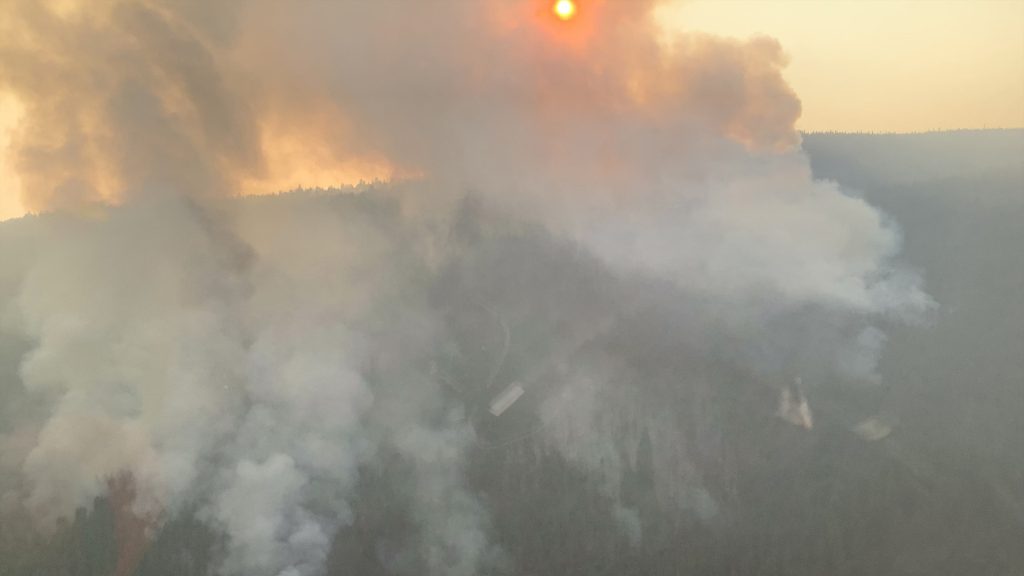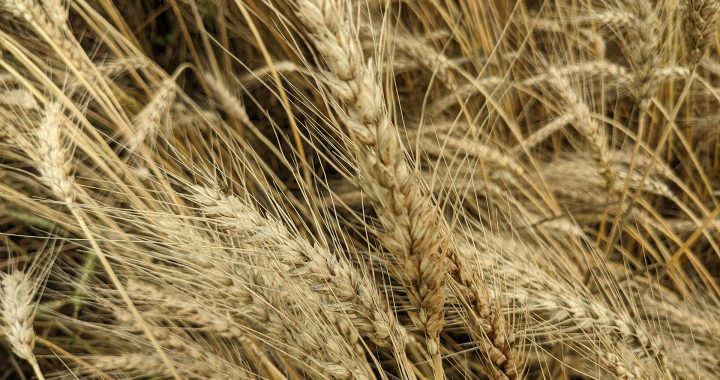Wildfire evacuations ordered for thousands of people in West Kelowna, B.C.
Central Okanagan Emergency Operations ordered the evacuation of close to a thousand homes, representing about 2,500 people, with thousands of other properties placed on alert and residents warned to be ready to leave at a moment’s notice.

An aerial view of the wildfire approaching West Kelowna and Westbank First Nation in southern B.C. Photo: BC Wildfire Service
Hundreds of properties were ordered to evacuate late Thursday under threat from a wildfire near the city of West Kelowna, B.C., which has been placed under a state of emergency.
Central Okanagan Emergency Operations ordered the evacuation of close to a thousand homes, representing about 2,500 people, with thousands of other properties placed on alert and residents warned to be ready to leave at a moment’s notice.
“Tactical evacuation is already underway,” the operations centre said in a statement, adding that residents subject to the evacuation orders must leave immediately.
Jason Brolund, chief of the West Kelowna fire department, said the evacuation order area was likely to grow Thursday night.
“I don’t want people to panic, but I always want people to take it seriously,” Brolund said at a press conference Thursday evening.
B.C. evacuees told to register online here
About 6,000 other properties were already on evacuation alert due to the out-of-control McDougall Creek wildfire, which began Tuesday and has grown to 11 square kilometres in size.
The operations centre expanded the evacuation order twice more late Thursday, including properties north to Nahun, and remaining properties in the Rose Valley neighbourhood north of Stevens Road, and West Kelowna Estates.
Brolund said the fire is expected to be much larger Friday morning.
The fire prompted a local state of emergency for the city of West Kelowna and part of the nearby Westbank First Nation as crews prepare for what authorities say will be the “most challenging” few days of the province’s record-breaking fire season.
Cliff Chapman, director of operations for the BC Wildfire Service, said at a news conference Thursday that they were seeing extreme behaviour by the fire, which is just a few kilometres away from West Kelowna.
Fire behaviour
“We rarely see that type of fire behaviour, you know, pre-breakfast time in B.C., and we’re seeing it today and we’re going to see it continue through today,” he said during a news conference on Thursday.
Ben Stewart, MLA for West Kelowna, said he woke up Thursday to find “thick debris and ash covering everything” outside his West Kelowna home. The smoke worsened as the day went on, he said.
“It’s probably going to get worse this afternoon depending on the winds,” he said in an interview.
He said he was most worried about those who live close to the fire, noting recently built schools and neighbourhoods.
“You never really think about it until all of a sudden, you know, it’s at your doorstep,” he said, adding that he “wouldn’t be surprised” if more residents were ordered to leave.
Operations centre
Late Thursday, the Thompson-Nicola Regional District Emergency Operations Centre issued an evacuation order for 42 properties in Blue Sky Country due to the risk posed by the Kookipi Creek wildfire. An evacuation alert was issued for an additional 10 properties. Fraser Valley Regional District also expanded an evacuation order in the Nahatlatch Provincial Park and surrounding area because of the rapid growth of the Kookipi Creek wildfire.
The Squamish-Lillooet Regional District issued an evacuation order the for Slim Creek, Tyaughton Lake and Gun Creek Road ares due to the immediate danger posed by out of control blazes burning in the Gun Lake and Mission Mountain areas.
Most of the southern half of the province has been baking under a heat wave, and Chapman said the breakdown of the high-pressure ridge will bring gusty winds and dry lightning, making the next few days the most challenging yet in a record-breaking fire season.
“You couple that with the extreme drought conditions that we’ve spoken about on these availabilities over the course of the last number of months, and the conditions out in the forests are very primed to see significant fire growth and to see new fires challenge our suppression efforts,” he said.
Evacuees are being asked to register online or go to the Information Centre at Royal LePage Place.
Wildlife service
Emergency Management Minister Bowinn Ma said the wildfire service has deployed “significant resources” to the fire.
“It is our hope that we don’t have to recommend that the communities go to an evacuation order but, of course, we’re also asking everyone to be prepared now,” she said.
Forests Minister Bruce Ralston told the news conference that the drought situation has worsened, with 28 of B.C.’s 34 water reservoirs at Level 4 or 5, the highest possible rankings on the scale.
A total of 49 daily heat records have been broken during the heat wave that sent temperatures into the 40s in some parts of B.C.
But only a handful of records were set Wednesday, including in Lillooet, which was the hottest place in Canada, at 39.3 C, breaking the old record set in 2008. Heat warnings have been dropped for Metro Vancouver but remain posted for areas including a section of eastern Vancouver Island, the Fraser Canyon, Thompson and 100 Mile regions, as well as much of the Kootenay, Okanagan and Boundary.
Precarious
While the fire situation is precarious in B.C., Ma said the province is able to lend a hand to those in the Northwest Territories, where fires have forced the evacuation of the entire capital city of Yellowknife, along with several other smaller communities.
Ma told the news conference that 55 hospital patients and care-home residents evacuated from the territory were expected to arrive in Vancouver.
“We’re able to provide approximately 1,100 spaces in the north to receive evacuations if they require it,” Ma added.
Premier David Eby offered his support to the Northwest Territories, saying the hearts of British Columbians are with its residents.
But officials, including Chapman, said B.C. must remain focused on its own firefighting challenges.
Record temperatures
“We will not see record temperatures the way we have been seeing, but we are not going to see rain, so we are going to continue to need resources in B.C. to continue to protect the homes and properties across the province,” he said.
“We have significant fire on the landscape that we (have) been actively working 24 hours a day for the last number of weeks. Our anticipation is that is going to continue for the next couple of weeks ahead.”
In a post late Thursday on X, formerly known as Twitter, the premier addressed the rapidly changing wildfire situation, urging those in affected areas to follow the evacuation orders from their local government or First Nation and to stay safe.









